The caster wheel configuration can have a huge impact on the amount of force exerted to move a cart, as well as the load capacity of the cart. There are 6 common configurations for traditional rectangular carts, and each has its own benefits. Variations in the number of swivel or rigid casters, and layout of casters, can make a huge difference.
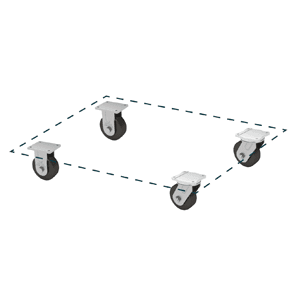
Two rigid casters in the back and two swivel casters in the front.
Benefit: This configuration turns easily and tracks very well when towed. Most popular configuration for casters on carts and trucks
Drawback: The cart cannot freely move in any direction. To make a 90° turn, the cart must be pulled around on a pivot of the rigid casters.
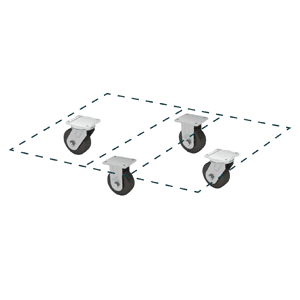
This cart configuration is highly maneuverable and will rotate at its own length.
Benefit: This allows the maneuverability of the tilt-type cart but allows for the tilt action to be eliminated and heavier loads to be carried.
Drawback: This configuration is more expensive than the standard diamond pattern with four rigid casters.
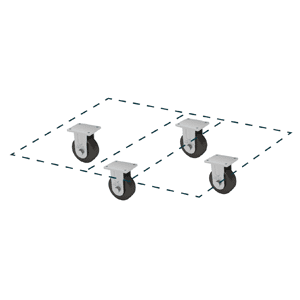
Four rigid casters are set in a diamond pattern. Used on tilt-type cart configurations.
Benefit: This is the lowest cost configuration for carts and trucks. It can also pivot on the center wheels to turn or do complete 360° rotations.
Drawback: It cannot carry heavy loads, because only three casters are in contact with the floor at one time (tilt type cart) and it cannot be pushed sideways.
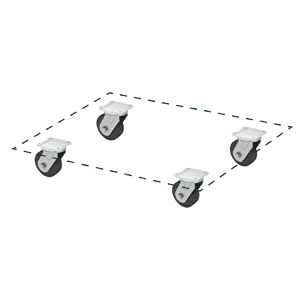
Four swivel casters at the corners of the cart.
Benefit: The cart can be moved in any direction without the need for turning around.
Drawback: The cart can be hard to control when moving in a straight line. Easy fix: Equip the casters with swivel locks.
An easy fix to this is to equip the industrial casters with swivel locks. Then when the cart needs to be moved or towed in a straight line, the rear casters can be locked.
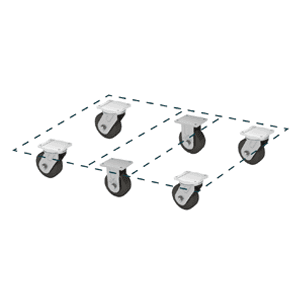
Similar to the 4-wheel diamond caster patterns but can carry heavier loads and are better suited for very long carts.
This caster pattern allows the cart to turn in its own length and the cart style can either by tilt type or non-tilt for even greater load capacity.
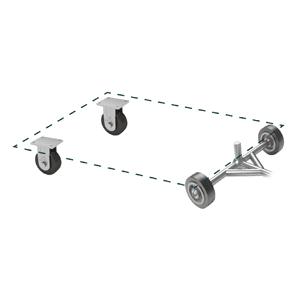
Two rigid casters in the rear of the cart with two axle-mounted wheels in the front of the cart.
Benefit: This configuration is ideal for heavy loads and is usually power-drawn.
Drawback: This type of cart is not easily maneuvered when operated manually.